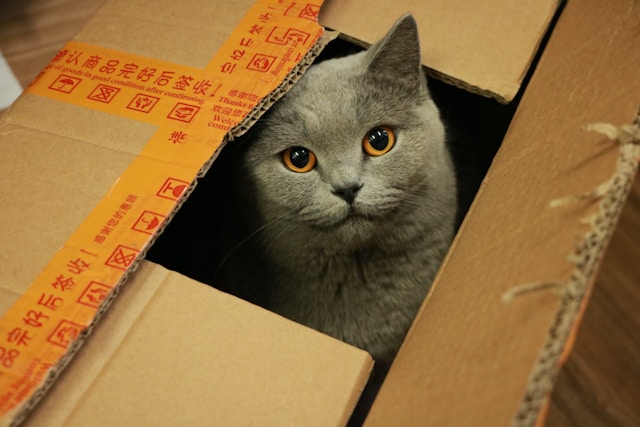
Why Do Cats Love Boxes? The Psychology Behind It
If you’ve ever brought home a shiny new toy for your cat only to watch them ignore it and leap into the cardboard box it came in, you’re not alone. Cat owners everywhere have asked the same question: Why do cats love boxes so much?
While it may seem like a quirky feline obsession, the answer is rooted in instinct, comfort, and psychology. Let’s take a deeper look at the fascinating reasons behind your kitty’s cardboard crush.
1. Boxes Provide Safety and Security
Cats are both predators and prey in the wild. This dual nature means they naturally seek enclosed, hidden spaces where they can observe their surroundings without being seen. Boxes offer the perfect hiding spot, especially in busy or unfamiliar environments.
“Boxes create a sense of control and safety. They’re like a cat’s personal panic room.”
Enclosed spaces give cats the confidence to relax, sleep, or stalk from a vantage point. It’s not just cute—it’s survival instinct at work.
2. They Help Cats Stay Warm
Cardboard is a surprisingly good insulator. It helps retain body heat, making a box feel like a cozy little nest—especially attractive to cats who love warmth.
Since a cat’s preferred temperature zone is between 85–100°F (29–38°C), warmer than most homes, a box helps them stay snug without exerting energy.
3. Boxes Reduce Stress
Multiple studies have shown that cats provided with hiding spots, such as boxes, show lower stress levels, especially in unfamiliar environments like shelters or new homes.
A 2014 study from the University of Utrecht found that shelter cats given boxes adjusted faster and exhibited less stress-related behavior than those without them.
Boxes aren’t just fun—they’re therapeutic.
4. Curiosity and Playfulness
Cats are naturally curious creatures. A new box presents a fresh object to explore, sniff, rub, scratch—or ambush from. The crinkle of cardboard, the shape, the edges—every detail is stimulation for their senses.
Even wild cats—like lions and leopards—have shown interest in enclosed objects. So, it’s not just your house cat; the love for boxes seems to be wired into feline DNA.
5. It’s Their Version of a “Territory”
Cats are territorial by nature. When they climb into a box, they’re essentially claiming it. Rubbing their scent, scratching the corners, or simply sitting in it is their way of saying, “This is mine now.”
A box can become a temporary domain where they feel in control—without interference from humans or other pets.
Bonus: Not Just Cardboard Boxes
While cardboard is the classic, cats often enjoy:
- Laundry baskets
- Empty suitcases
- Paper bags (handles removed for safety!)
- Drawers and cabinets
- Reusable grocery bins
In short: if it’s a confined space—they want in.
Should You Let Your Cat Play in Boxes?
Absolutely—but with a few safety tips:
- Remove any tape, staples, or string.
- Avoid boxes with strong chemical smells.
- Don’t allow boxes to become too worn or soggy (they may collapse).
- If your cat is chewing and ingesting cardboard, consult a vet.
You can even buy purpose-built cat cubes or fabric boxes, but chances are… they’ll still go for the cardboard one.
